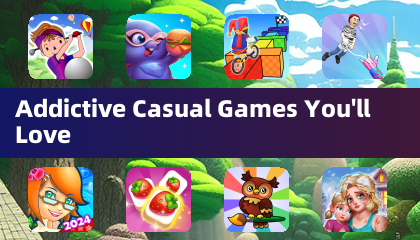Nintendo stands as a titan in the world of video games, renowned for its pioneering spirit and a legacy of innovation that spans decades. With a treasure trove of beloved intellectual properties, Nintendo continues to enchant gamers with its timeless charm. As the company gears up for the launch of the Nintendo Switch 2, it's a perfect moment to reflect on the rich history of Nintendo's console journey.
Below, we delve into a comprehensive list of every console Nintendo has ever launched, showcasing how they've continually pushed the boundaries of gaming.
AnswerSee Results*Looking to save on a new Nintendo Switch or new titles for your system? Be sure to check out the best Nintendo deals available today.*
How Many Nintendo Consoles Have There Been?
In total, 32 Nintendo consoles have graced the market throughout the company's history. The upcoming Switch 2 will mark the 33rd entry. This count includes revision models for both home and handheld consoles, featuring variations like XL and Mini editions.
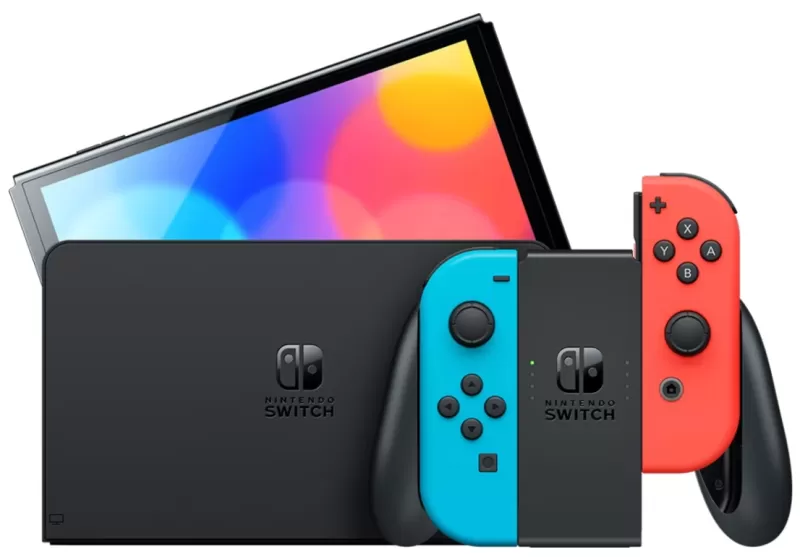 Latest Model### Nintendo Switch OLED (Neon Blue & Red)
Latest Model### Nintendo Switch OLED (Neon Blue & Red)
4See it at AmazonEvery Nintendo Console in Order of Release
Color TV-Game - June 1, 1977
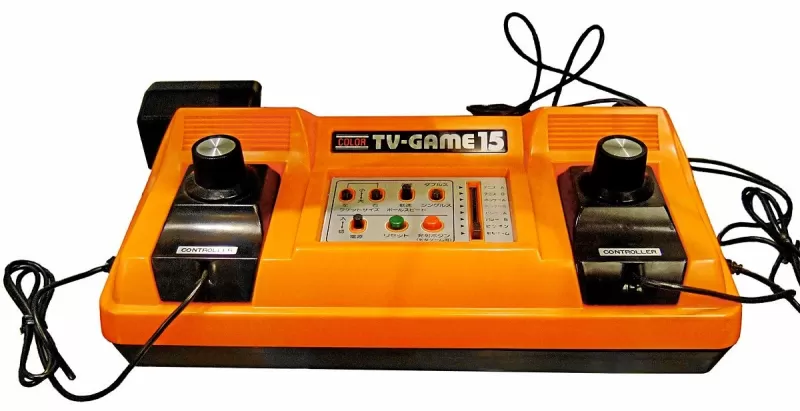 Nintendo's inaugural venture into gaming hardware came with the Color TV-Game line, a collaboration with Mitsubishi Electronics. This partnership was crucial as Nintendo was new to hardware development. The Color TV-Game systems were a massive hit at the time, setting the stage for Nintendo's future focus on gaming. Even after nearly 50 years, their impact resonates in Nintendo's ongoing commitment to gaming innovation.
Nintendo's inaugural venture into gaming hardware came with the Color TV-Game line, a collaboration with Mitsubishi Electronics. This partnership was crucial as Nintendo was new to hardware development. The Color TV-Game systems were a massive hit at the time, setting the stage for Nintendo's future focus on gaming. Even after nearly 50 years, their impact resonates in Nintendo's ongoing commitment to gaming innovation.
Game & Watch - April 28, 1980
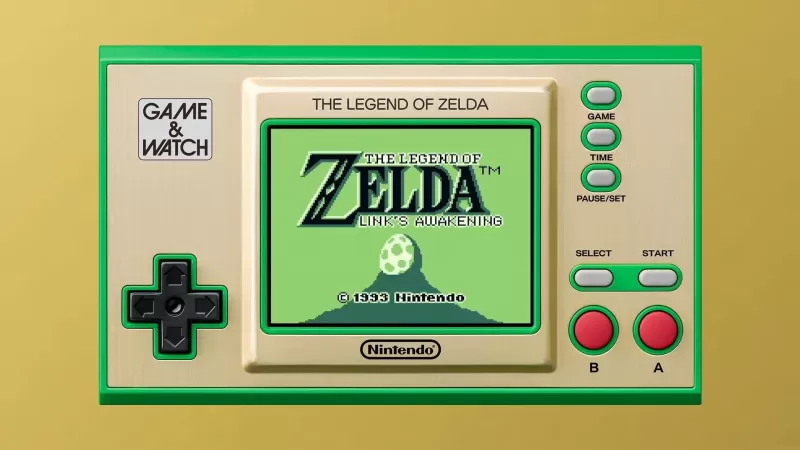 Nintendo's first foray into handheld gaming was marked by the Game & Watch series, each unit featuring a unique game. Despite their seemingly simple nature, these devices sold over 40 million units worldwide. They introduced groundbreaking features like the D-Pad in the Donkey Kong Game & Watch, innovations still in use today. Recently, Nintendo revived the series with limited editions celebrating the anniversaries of Mario and Zelda.
Nintendo's first foray into handheld gaming was marked by the Game & Watch series, each unit featuring a unique game. Despite their seemingly simple nature, these devices sold over 40 million units worldwide. They introduced groundbreaking features like the D-Pad in the Donkey Kong Game & Watch, innovations still in use today. Recently, Nintendo revived the series with limited editions celebrating the anniversaries of Mario and Zelda.
Nintendo Entertainment System - October 18, 1985
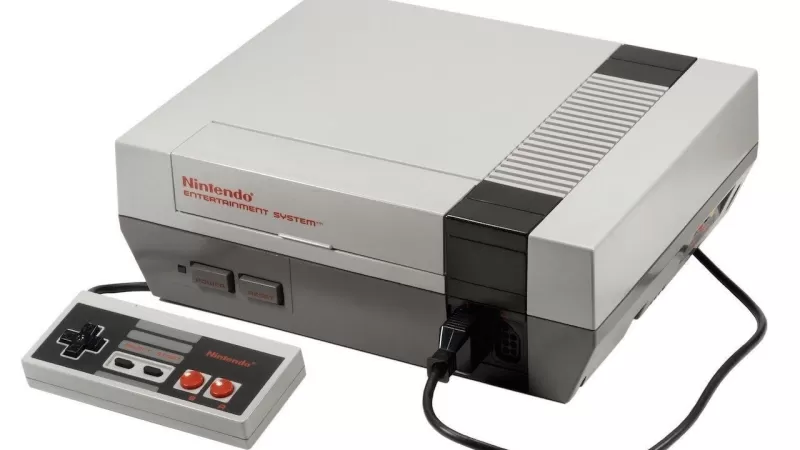 Known as the Family Computer (Famicom) in Japan, the Nintendo Entertainment System (NES) was Nintendo's first home console released in North America. It introduced the cartridge system, allowing players to enjoy a variety of games. Iconic franchises such as Super Mario, The Legend of Zelda, and Metroid all began on this platform. The NES is a cornerstone in video game history, setting the stage for future generations.
Known as the Family Computer (Famicom) in Japan, the Nintendo Entertainment System (NES) was Nintendo's first home console released in North America. It introduced the cartridge system, allowing players to enjoy a variety of games. Iconic franchises such as Super Mario, The Legend of Zelda, and Metroid all began on this platform. The NES is a cornerstone in video game history, setting the stage for future generations.
Game Boy - July 31, 1989
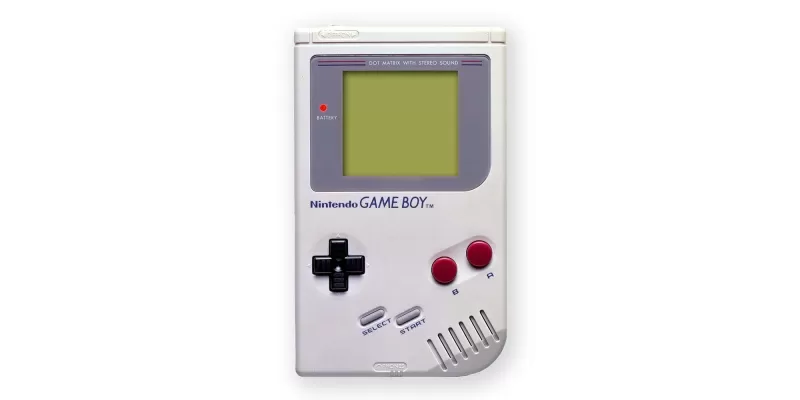 Launched in North America during the summer of 1989, the Game Boy marked Nintendo's first dedicated handheld video game console. It advanced beyond the Game & Watch by supporting cartridges for a broader game selection. The Game Boy's most famous title, Tetris, was bundled with the system in most regions except Japan.
Launched in North America during the summer of 1989, the Game Boy marked Nintendo's first dedicated handheld video game console. It advanced beyond the Game & Watch by supporting cartridges for a broader game selection. The Game Boy's most famous title, Tetris, was bundled with the system in most regions except Japan.
Super Nintendo Entertainment System - August 23, 1991
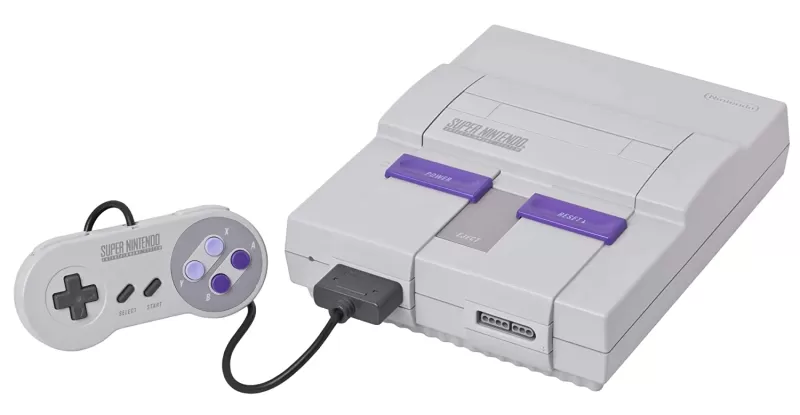 With the Super Nintendo Entertainment System (SNES), Nintendo brought 16-bit graphics to its home consoles for the first time. This era saw major developments in Nintendo's flagship series, including Super Mario World and Donkey Kong Country. Despite entering the market later in its generation, the SNES became the best-selling console of its time thanks to its stellar software library and broad appeal.
With the Super Nintendo Entertainment System (SNES), Nintendo brought 16-bit graphics to its home consoles for the first time. This era saw major developments in Nintendo's flagship series, including Super Mario World and Donkey Kong Country. Despite entering the market later in its generation, the SNES became the best-selling console of its time thanks to its stellar software library and broad appeal.
Virtual Boy - August 14, 1995
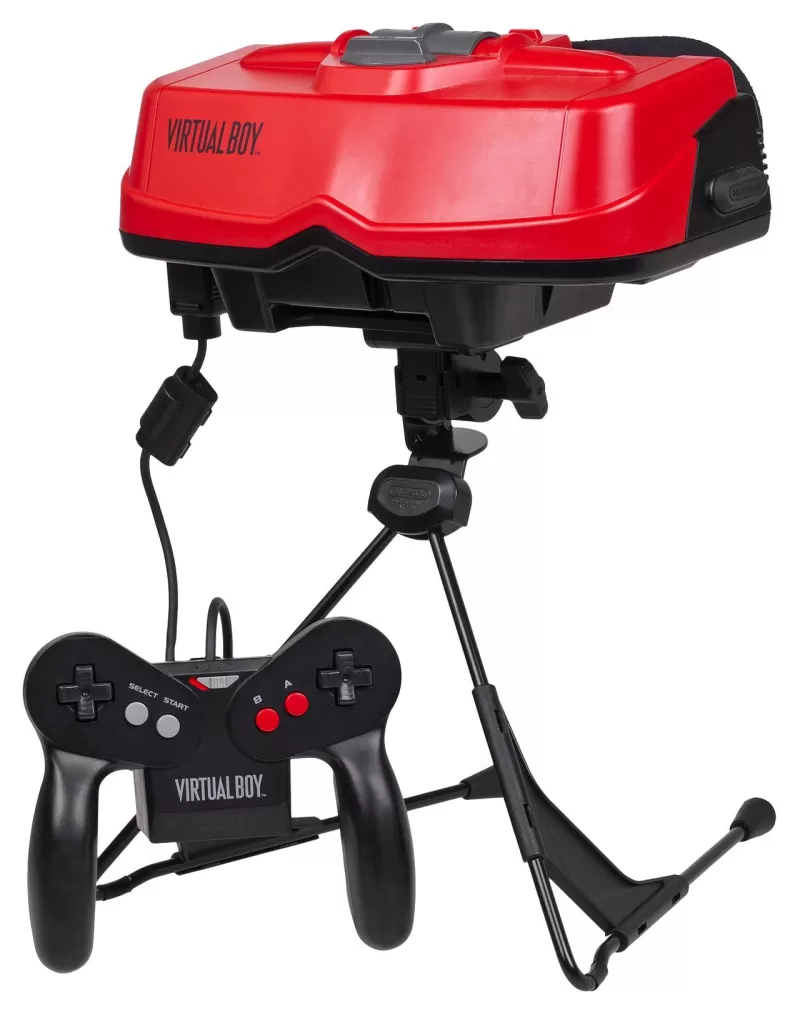 Perhaps Nintendo's most unconventional console, the Virtual Boy was the first to offer true 3D visuals. With only 22 games released, including notable titles like Mario's Tennis and Virtual Boy Wario Land, it had a short market life of just one year and sold nearly 800,000 units.
Perhaps Nintendo's most unconventional console, the Virtual Boy was the first to offer true 3D visuals. With only 22 games released, including notable titles like Mario's Tennis and Virtual Boy Wario Land, it had a short market life of just one year and sold nearly 800,000 units.
Game Boy Pocket - September 3, 1996
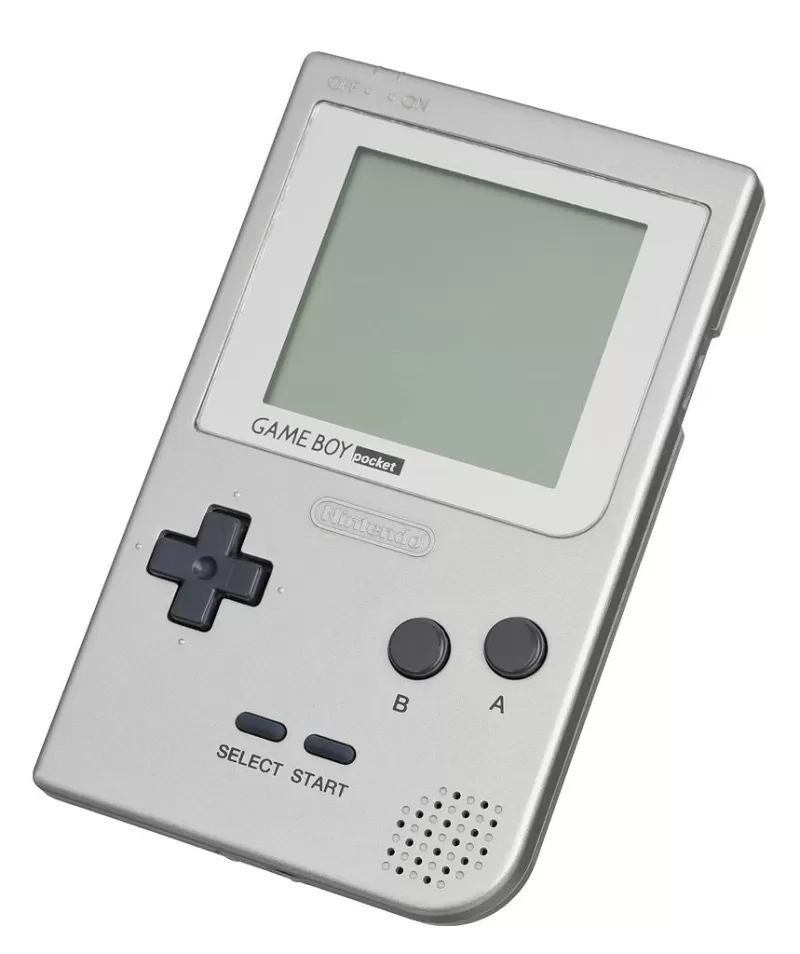 A smaller version of the Game Boy, the Game Boy Pocket featured a monochrome screen, replacing the original's green tint. Enhanced hardware improved screen response time, though the smaller size resulted in shorter battery life compared to its predecessor.
A smaller version of the Game Boy, the Game Boy Pocket featured a monochrome screen, replacing the original's green tint. Enhanced hardware improved screen response time, though the smaller size resulted in shorter battery life compared to its predecessor.
Nintendo 64 - September 29, 1996
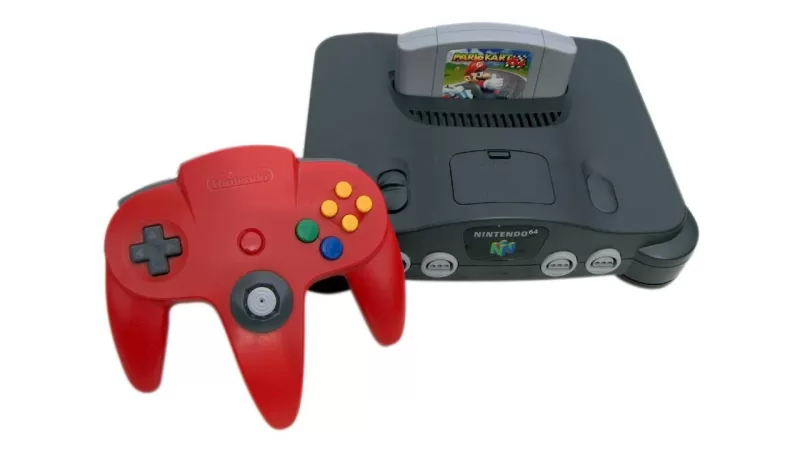 Introducing 3D graphics to Nintendo's home console lineup, the Nintendo 64 revolutionized gaming with landmark titles like Super Mario 64 and The Legend of Zelda: Ocarina of Time. Its innovative controller, featuring the first analog stick, redefined player interaction. Nintendo also offered numerous special editions, including translucent variants.
Introducing 3D graphics to Nintendo's home console lineup, the Nintendo 64 revolutionized gaming with landmark titles like Super Mario 64 and The Legend of Zelda: Ocarina of Time. Its innovative controller, featuring the first analog stick, redefined player interaction. Nintendo also offered numerous special editions, including translucent variants.
Game Boy Light - April 14, 1998
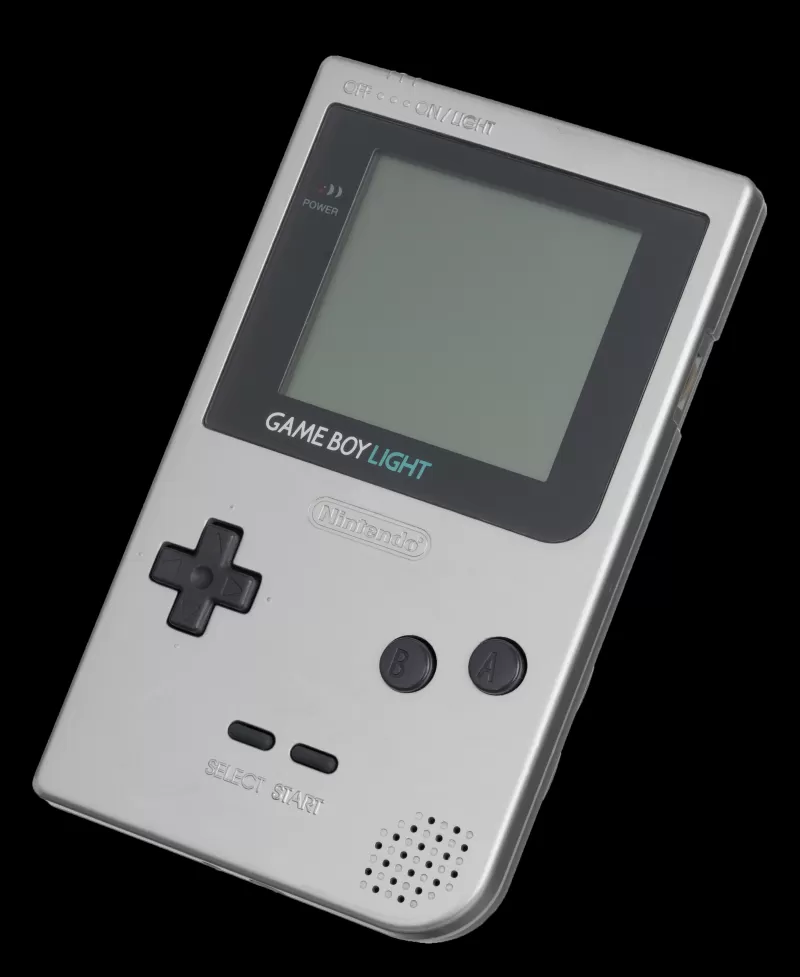 Exclusive to Japan, the Game Boy Light was larger than the Game Boy Pocket but added a backlight for playing in dim environments. This feature extended its battery life to around 20 hours, a significant improvement over the Game Boy Pocket.
Exclusive to Japan, the Game Boy Light was larger than the Game Boy Pocket but added a backlight for playing in dim environments. This feature extended its battery life to around 20 hours, a significant improvement over the Game Boy Pocket.
Game Boy Color - November 18, 1998
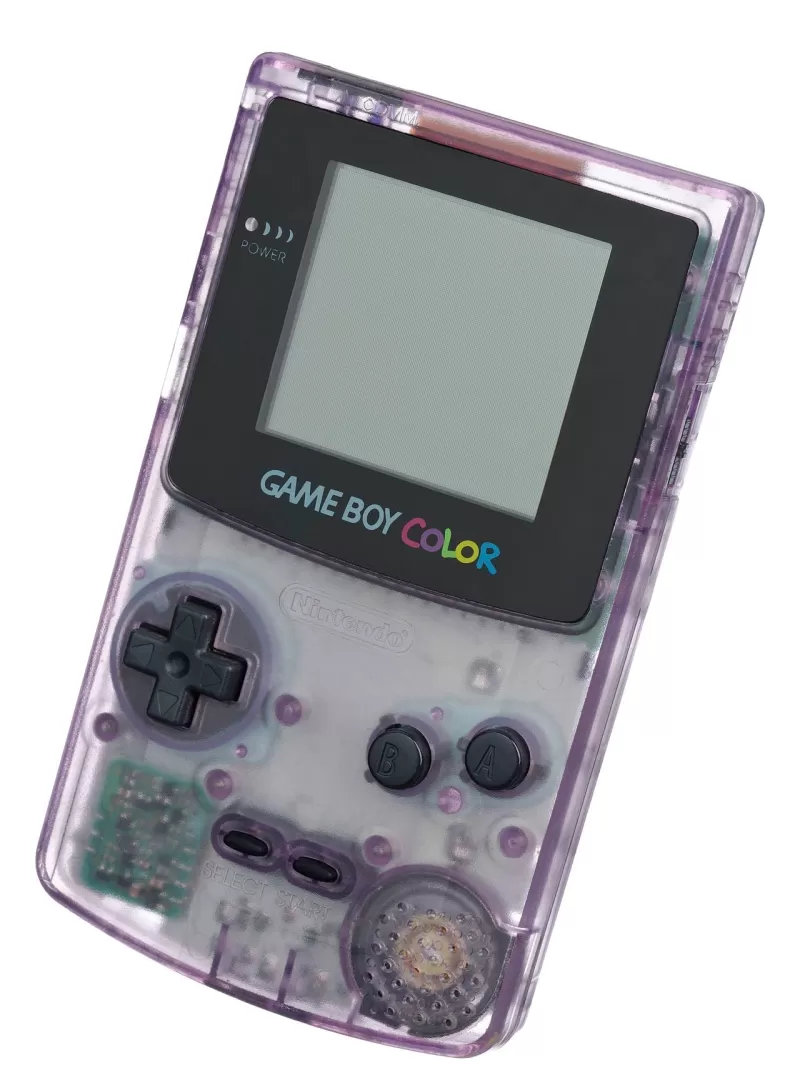 With the Game Boy Color, Nintendo brought color to its handheld consoles. Backwards compatible with all Game Boy games, it enhanced titles like Tetris with vibrant colors. The new hardware also enabled hundreds of exclusive games for the system.
With the Game Boy Color, Nintendo brought color to its handheld consoles. Backwards compatible with all Game Boy games, it enhanced titles like Tetris with vibrant colors. The new hardware also enabled hundreds of exclusive games for the system.
Game Boy Advance - June 11, 2001
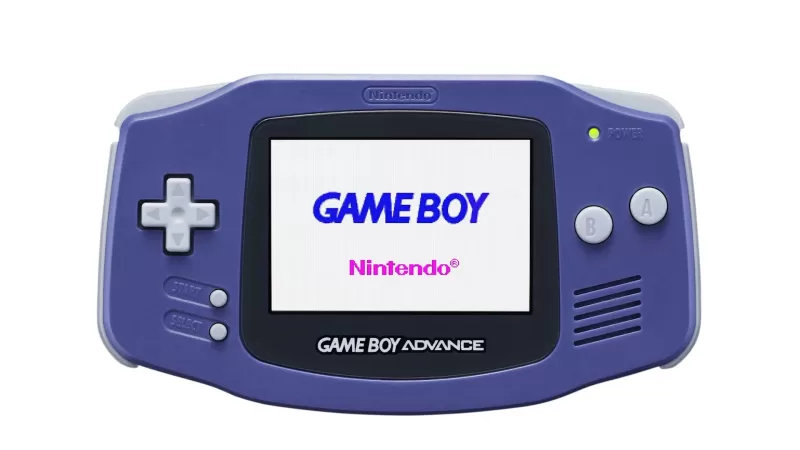 Marking a significant leap for the Game Boy line, the Game Boy Advance (GBA) introduced 16-bit graphics in a handheld format. Its horizontal, rectangular design was a departure from the vertical Game Boy models. Backwards compatibility with Game Boy and Game Boy Color games expanded its library into the thousands.
Marking a significant leap for the Game Boy line, the Game Boy Advance (GBA) introduced 16-bit graphics in a handheld format. Its horizontal, rectangular design was a departure from the vertical Game Boy models. Backwards compatibility with Game Boy and Game Boy Color games expanded its library into the thousands.
Pokémon mini - November 16, 2001
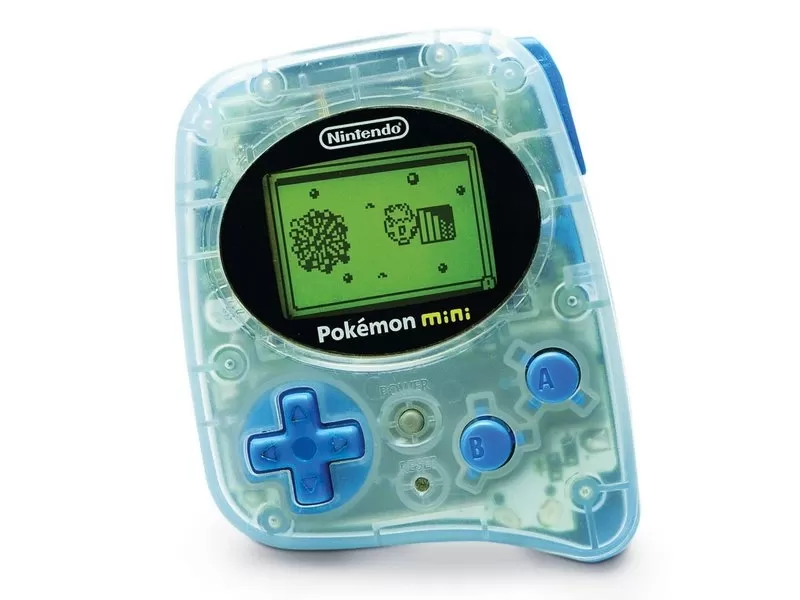 Image Credit: GamesRadarThe Pokémon mini was a tiny handheld focused exclusively on Pokémon games. Only 10 games were ever released for it, with just four available in North America. It featured a clock, infrared communication, and built-in rumble.
Image Credit: GamesRadarThe Pokémon mini was a tiny handheld focused exclusively on Pokémon games. Only 10 games were ever released for it, with just four available in North America. It featured a clock, infrared communication, and built-in rumble.
Nintendo GameCube - November 18, 2001
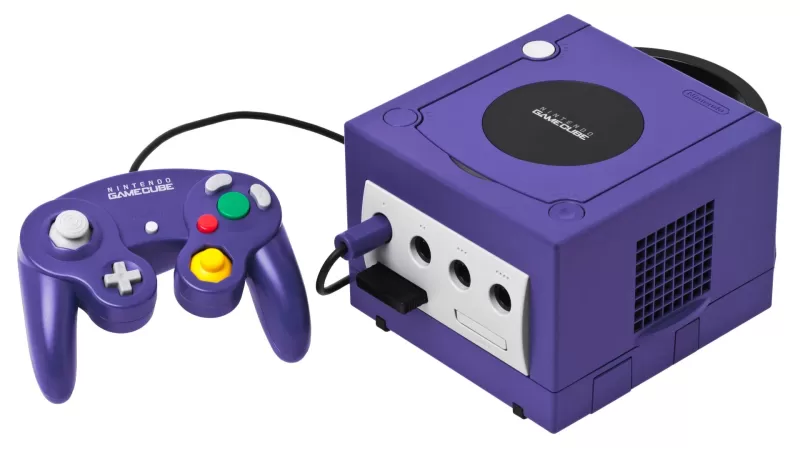 Building on the success of the Nintendo 64, the GameCube continued with sequels to beloved titles like Super Mario Sunshine and The Legend of Zelda: Wind Waker. It transitioned from cartridges to discs and introduced a new controller design with rumble, analog/digital triggers, and a unique stick layout. The GameCube's legacy endures, with franchises like Animal Crossing gaining further popularity.
Building on the success of the Nintendo 64, the GameCube continued with sequels to beloved titles like Super Mario Sunshine and The Legend of Zelda: Wind Waker. It transitioned from cartridges to discs and introduced a new controller design with rumble, analog/digital triggers, and a unique stick layout. The GameCube's legacy endures, with franchises like Animal Crossing gaining further popularity.
Panasonic Q - December 14, 2001
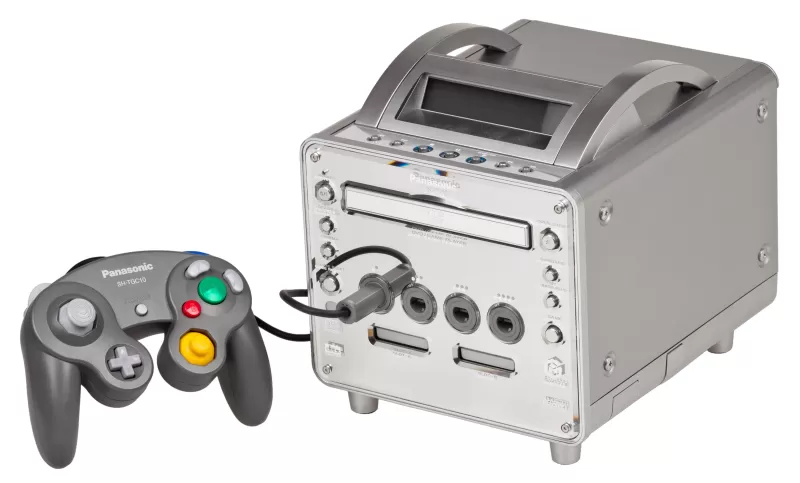 A collaboration between Panasonic and Nintendo, the Panasonic Q combined a GameCube with a DVD player. Its sleek stainless steel design and front LCD panel were striking, but high costs and low sales limited its two-year market life.
A collaboration between Panasonic and Nintendo, the Panasonic Q combined a GameCube with a DVD player. Its sleek stainless steel design and front LCD panel were striking, but high costs and low sales limited its two-year market life.
Game Boy Advance SP - March 23, 2003
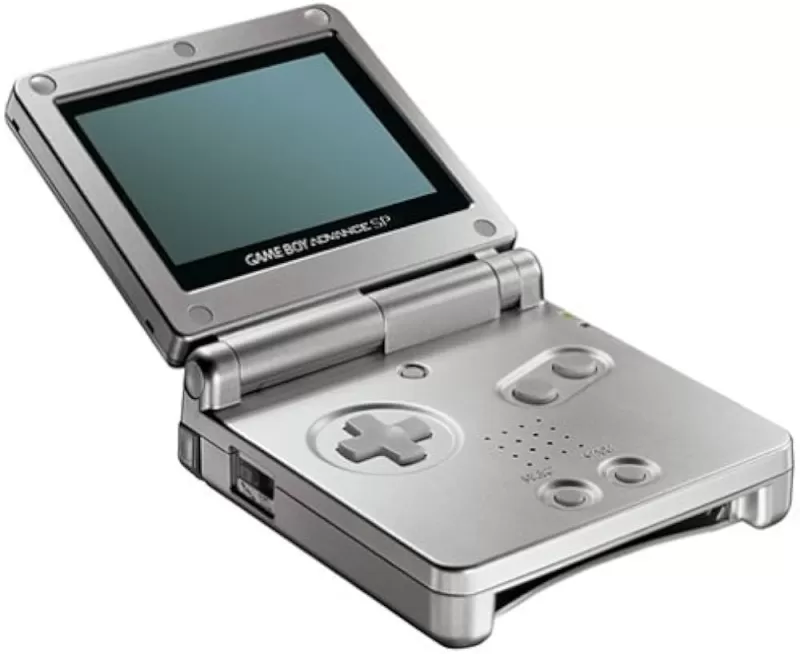 Revising the Game Boy Advance, the Game Boy Advance SP introduced a foldable design, a rechargeable battery, and a backlit screen in later models. However, it omitted a headphone jack, offering an adapter instead.
Revising the Game Boy Advance, the Game Boy Advance SP introduced a foldable design, a rechargeable battery, and a backlit screen in later models. However, it omitted a headphone jack, offering an adapter instead.
Nintendo DS - November 21, 2004
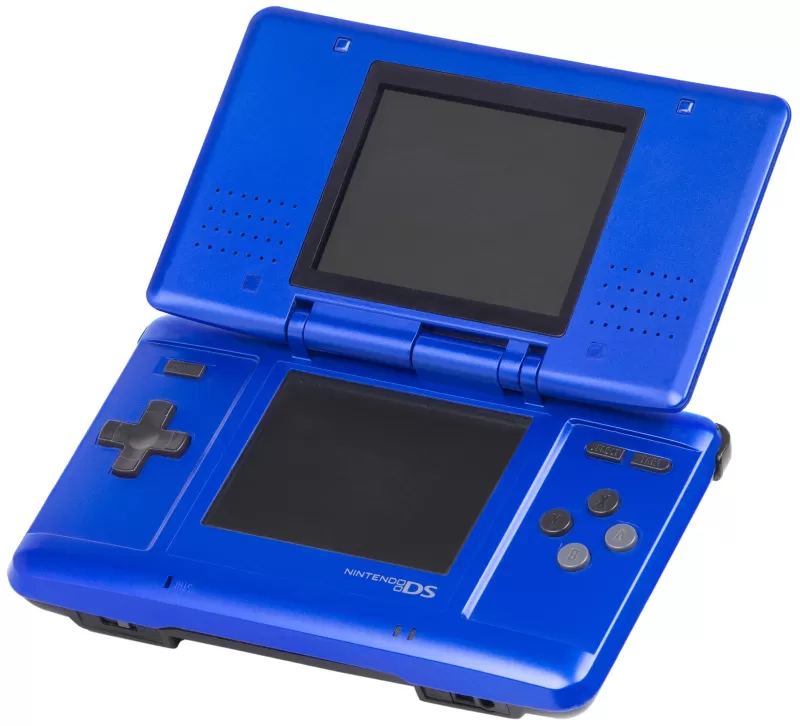 Launching the DS line, the Nintendo DS became Nintendo's best-selling console. Its dual-screen design, including a touchscreen with a stylus, and Wi-Fi support offered unique gaming experiences.
Launching the DS line, the Nintendo DS became Nintendo's best-selling console. Its dual-screen design, including a touchscreen with a stylus, and Wi-Fi support offered unique gaming experiences.
Game Boy Micro - September 19, 2005
 Revealed at E3 2005, the Game Boy Micro impressed with its compact size. Backwards compatible with previous Game Boy games, it featured an adjustable backlight for better screen visibility. It sold 2.42 million units over 18 months.
Revealed at E3 2005, the Game Boy Micro impressed with its compact size. Backwards compatible with previous Game Boy games, it featured an adjustable backlight for better screen visibility. It sold 2.42 million units over 18 months.
Nintendo DS Lite - June 11, 2006
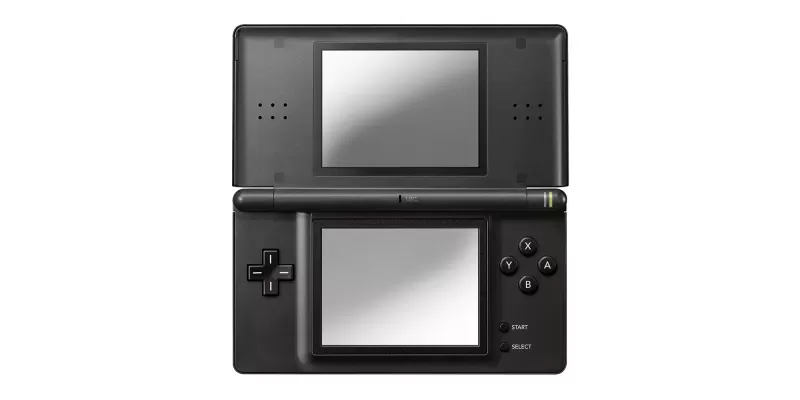 Revising the Nintendo DS, the DS Lite was slimmer, lighter, and had brighter screens. Its improved battery life enhanced the gaming experience.
Revising the Nintendo DS, the DS Lite was slimmer, lighter, and had brighter screens. Its improved battery life enhanced the gaming experience.
Nintendo Wii - November 19, 2006
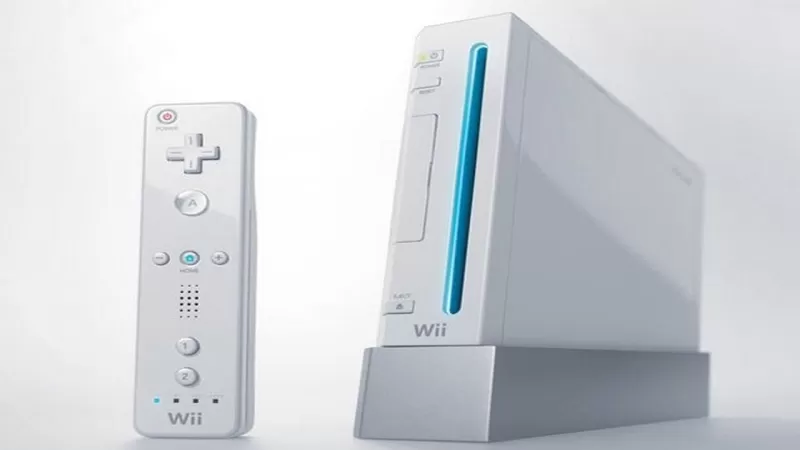 Revitalizing Nintendo's home console market, the Wii introduced motion controls with its innovative Wii Remote. Backwards compatible with GameCube titles, it also featured the Virtual Console for digital downloads of classic games.
Revitalizing Nintendo's home console market, the Wii introduced motion controls with its innovative Wii Remote. Backwards compatible with GameCube titles, it also featured the Virtual Console for digital downloads of classic games.
Nintendo DSi - November 1, 2008
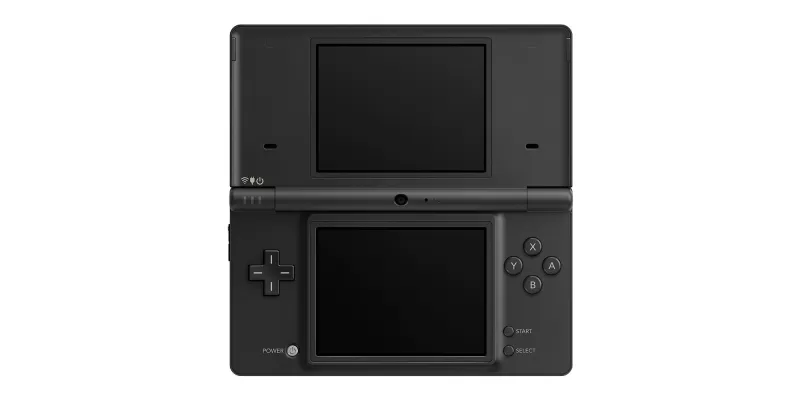 Revising the DS, the DSi added cameras and an SD card slot but removed the Game Boy Advance slot. This model focused on enhancing the DS experience with new features.
Revising the DS, the DSi added cameras and an SD card slot but removed the Game Boy Advance slot. This model focused on enhancing the DS experience with new features.
Nintendo DSi XL - November 21, 2009
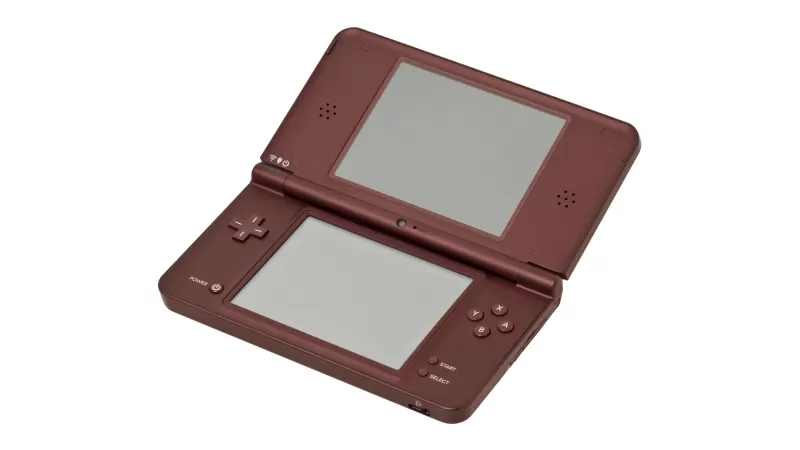 Larger than the DSi, the DSi XL offered bigger screens and improved sound quality. Its extended battery life catered to longer gaming sessions.
Larger than the DSi, the DSi XL offered bigger screens and improved sound quality. Its extended battery life catered to longer gaming sessions.
Nintendo 3DS - March 27, 2011
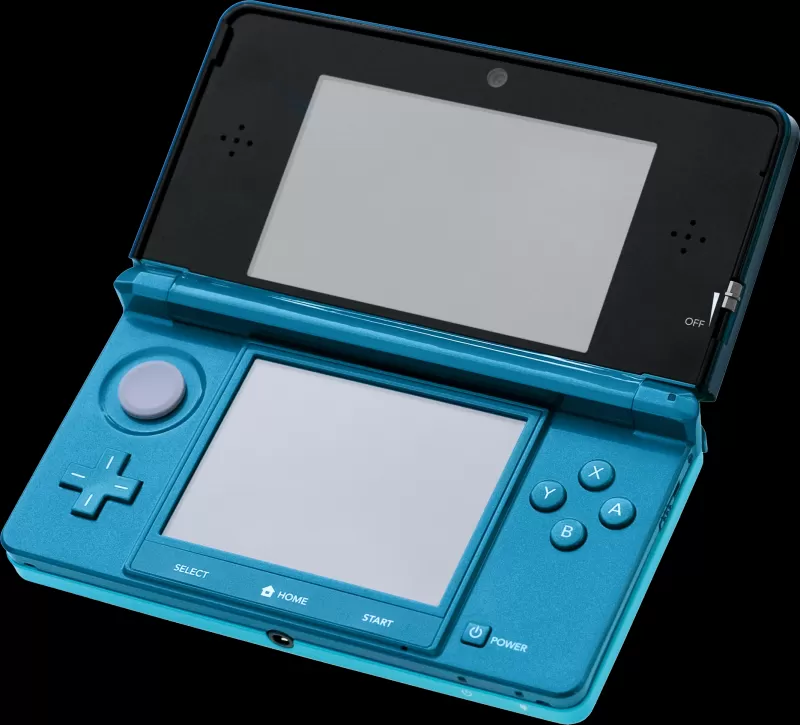 Following the DS, the 3DS introduced stereoscopic 3D visuals without glasses. It featured a rich library including The Legend of Zelda: A Link Between Worlds and Super Mario 3D Land.
Following the DS, the 3DS introduced stereoscopic 3D visuals without glasses. It featured a rich library including The Legend of Zelda: A Link Between Worlds and Super Mario 3D Land.
Nintendo 3DS XL - August 19, 2012
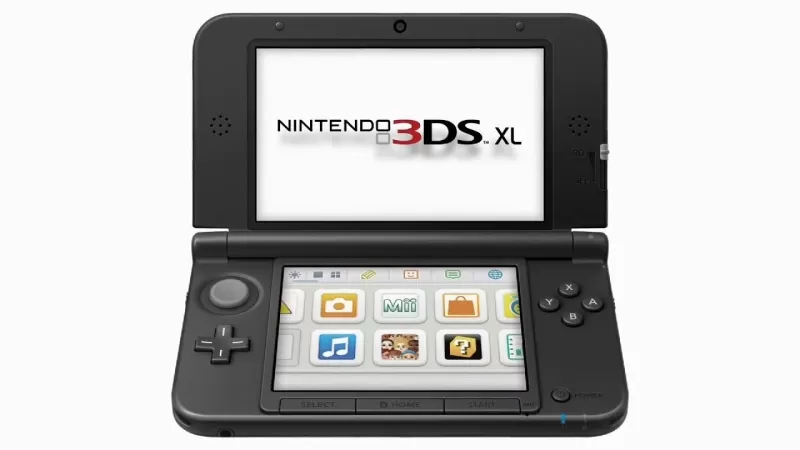 With a 90% larger screen than the original 3DS, the 3DS XL enhanced game visibility and retained all the features of its predecessor.
With a 90% larger screen than the original 3DS, the 3DS XL enhanced game visibility and retained all the features of its predecessor.
Nintendo Wii U - November 18, 2012
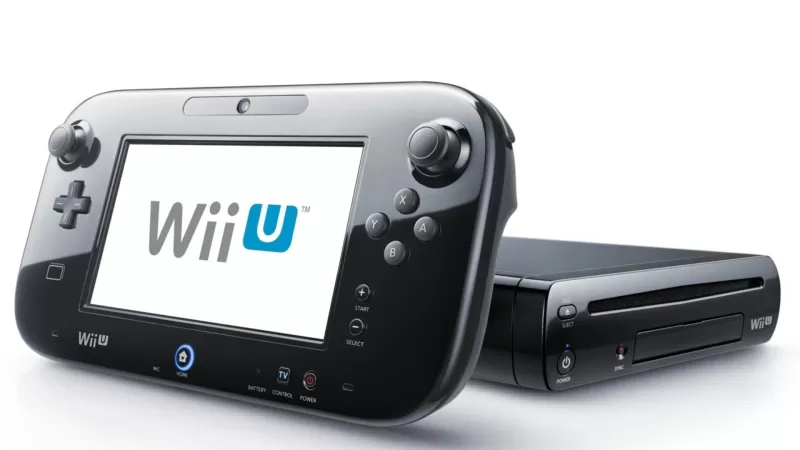 Successor to the Wii, the Wii U introduced the GamePad with a built-in screen for off-TV play. Supporting HD and backwards compatibility with Wii titles, it featured standout games like Xenoblade Chronicles X and Super Mario 3D World. However, marketing challenges and confusion affected its sales.
Successor to the Wii, the Wii U introduced the GamePad with a built-in screen for off-TV play. Supporting HD and backwards compatibility with Wii titles, it featured standout games like Xenoblade Chronicles X and Super Mario 3D World. However, marketing challenges and confusion affected its sales.
Nintendo Wii Mini - December 7, 2012
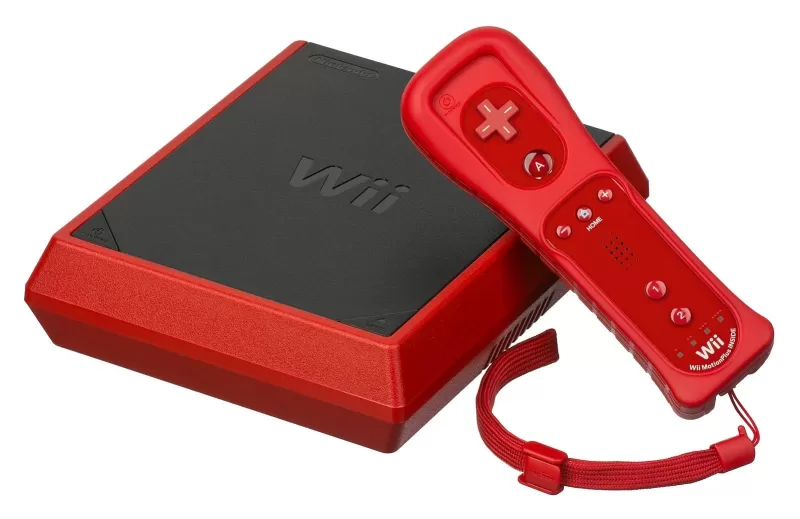 Released at the end of the Wii's lifecycle, the Wii Mini was a smaller, lighter version without GameCube support, Wi-Fi, 480p resolution, or SD cards. It launched in Canada before reaching Europe and the U.S.
Released at the end of the Wii's lifecycle, the Wii Mini was a smaller, lighter version without GameCube support, Wi-Fi, 480p resolution, or SD cards. It launched in Canada before reaching Europe and the U.S.
Nintendo 2DS - October 12, 2013
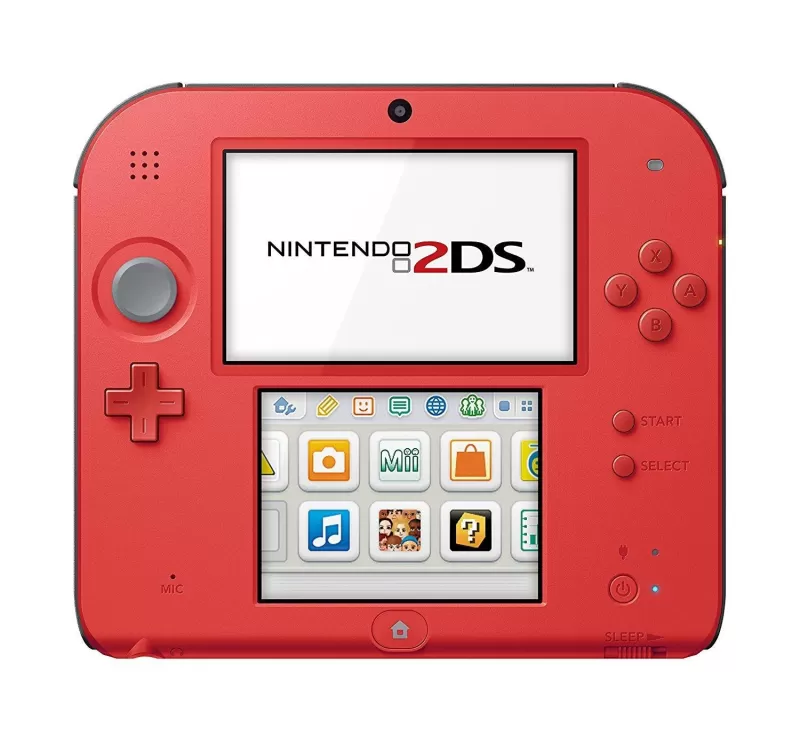 Offering 2D gaming, the 2DS retained all 3DS features except 3D visuals. Its flat design and lower price came at the cost of reduced sound quality.
Offering 2D gaming, the 2DS retained all 3DS features except 3D visuals. Its flat design and lower price came at the cost of reduced sound quality.
New Nintendo 3DS - October 11, 2014
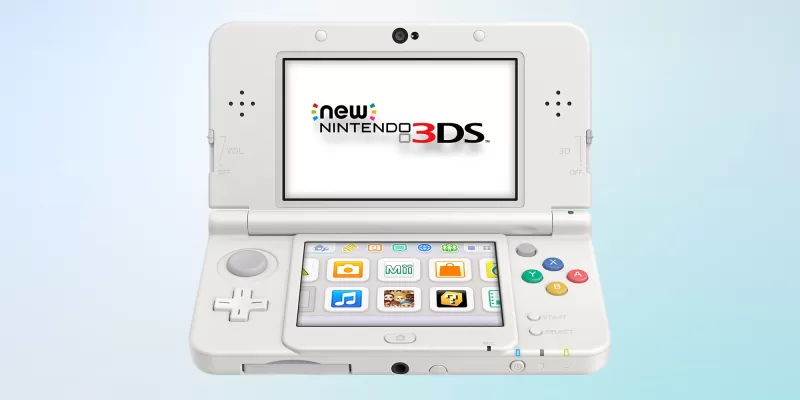 Upgrading the 3DS, the New Nintendo 3DS added new controls, NFC support for amiibo, and enhanced performance. It launched in Japan, Australia, and Europe before reaching North America.
Upgrading the 3DS, the New Nintendo 3DS added new controls, NFC support for amiibo, and enhanced performance. It launched in Japan, Australia, and Europe before reaching North America.
New Nintendo 3DS XL - February 13, 2015
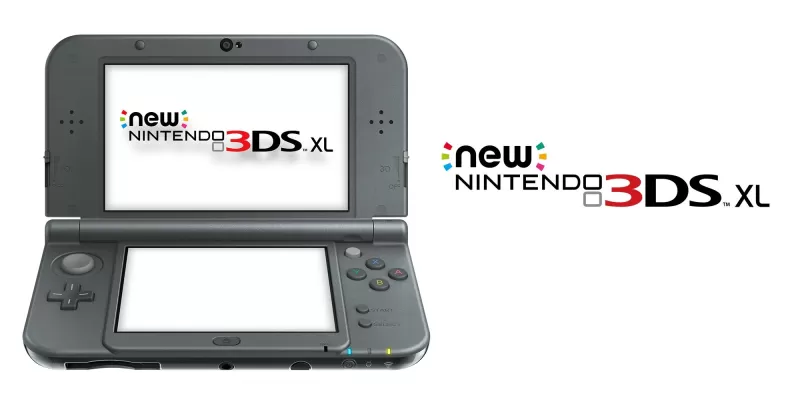 Preceding the standard New 3DS in North America, the New 3DS XL offered larger screens but removed the ability to change face plates. Special editions compensated for this limitation.
Preceding the standard New 3DS in North America, the New 3DS XL offered larger screens but removed the ability to change face plates. Special editions compensated for this limitation.
Nintendo Switch - March 3, 2017
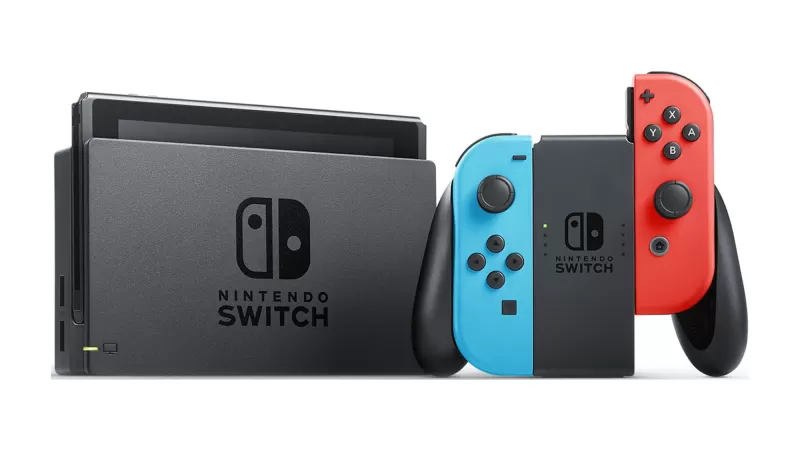 Realizing the Wii U's vision, the Nintendo Switch combined home and portable gaming. Its versatility and stellar first-party library propelled Nintendo back to the industry's forefront.
Realizing the Wii U's vision, the Nintendo Switch combined home and portable gaming. Its versatility and stellar first-party library propelled Nintendo back to the industry's forefront.
New Nintendo 2DS XL - July 28, 2017
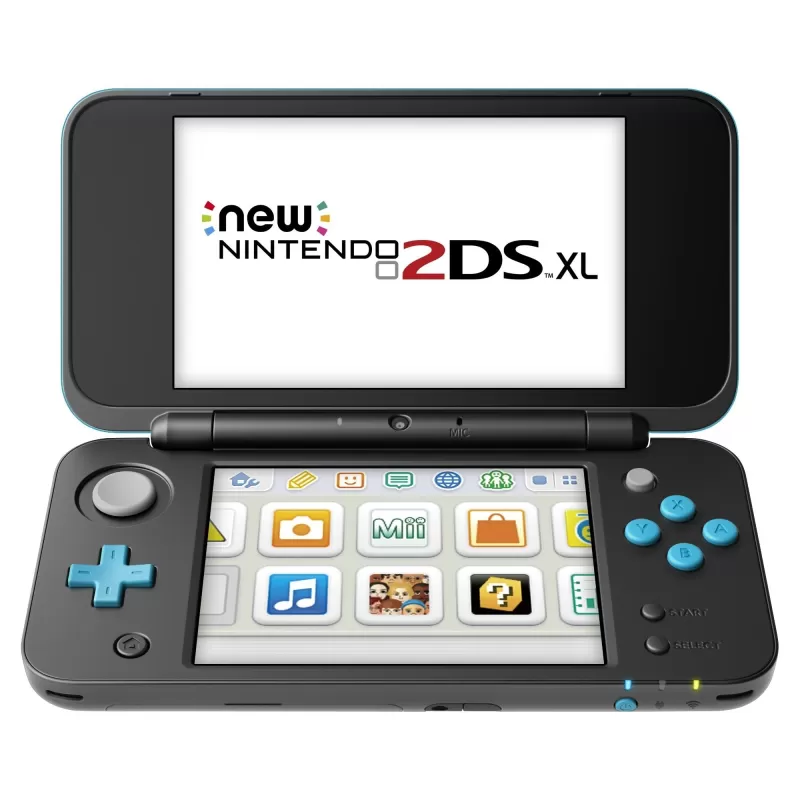 Updating the 2DS, the New 2DS XL added an analog stick, shoulder buttons, amiibo support, and returned to the clamshell design. It played New 3DS titles, expanding its game library.
Updating the 2DS, the New 2DS XL added an analog stick, shoulder buttons, amiibo support, and returned to the clamshell design. It played New 3DS titles, expanding its game library.
Nintendo Switch Lite - September 20, 2019
 Designed for handheld play, the Switch Lite featured built-in controllers and a smaller 5.5-inch LCD screen. Its lower price reflected its lack of TV docking capabilities.
Designed for handheld play, the Switch Lite featured built-in controllers and a smaller 5.5-inch LCD screen. Its lower price reflected its lack of TV docking capabilities.
Nintendo Switch OLED model - October 8, 2021
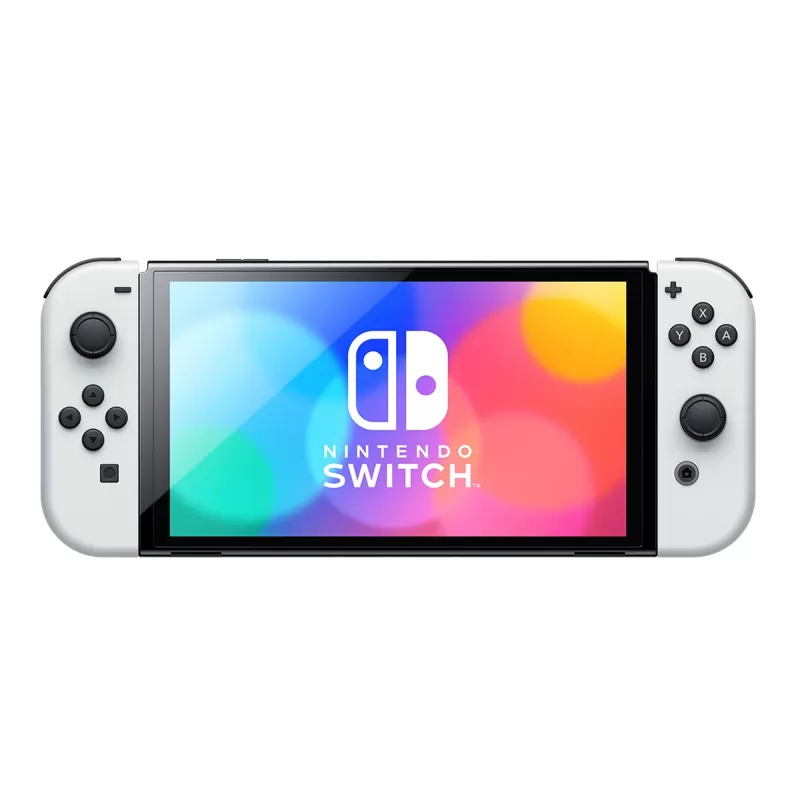 Debuting with Metroid Dread, the Switch OLED model upgraded to a 7-inch OLED screen, enhanced speakers, and a new kickstand. It came with a new dock featuring rounded corners and a LAN port.
Debuting with Metroid Dread, the Switch OLED model upgraded to a 7-inch OLED screen, enhanced speakers, and a new kickstand. It came with a new dock featuring rounded corners and a LAN port.
Upcoming Nintendo Consoles
After a long period of speculation, Nintendo has officially announced the Switch 2. The reveal trailer highlights new Joy-Con attachment methods, a larger screen, and an additional USB-C port. It suggests using Joy-Con as a mouse, hinting at potential new gameplay mechanics. The trailer also teases what appears to be a new Mario Kart with 24-player support, confirming "mostly" backward compatibility and continued support for both physical and digital games.Analysts estimate the Switch 2's price to be around $400. Based on the trailer, we've gathered all known information, with more details, including a release date, expected during a Nintendo Direct on April 2.
AnswerSee Results






